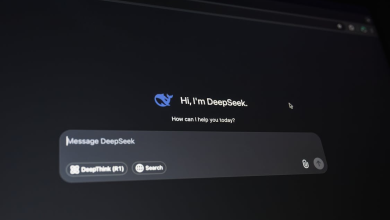The Digital Age of Beauty Curiosity
From selfie filters to augmented reality apps, the internet has made people more curious about how they look to others. One of the simplest yet most viral tools built around this curiosity is Pretty Scale, a free website that claims to calculate how “attractive” you are. Rather than adding effects or changing your face, it gives you a blunt score and commentary, which is exactly what made it explode in popularity.
Breaking Down What Pretty Scale Is
Test de Belleza is a face rating website designed to judge attractiveness using measurements. It doesn’t rely on advanced AI imaging; instead, it uses a marker system. After uploading a photo, users drag small points to align with their facial features. The site then generates an attractiveness score, usually displayed as a percentage, along with comments like “beautiful eyes” or “chin too small.”
It’s not an app you download — it’s browser-based, quick, and free, which makes it highly accessible to anyone curious enough to try.
The User Experience Step by Step
Using Pretty Scale is straightforward. Here’s the basic flow:
- Upload a photo where your face is clearly visible.
- Place the provided markers on different facial points, such as eyes, nose, lips, and chin.
- Let the system compare your proportions to its set of “ideal” measurements.
- Receive a percentage score and text feedback instantly.
The entire process takes only a few minutes, which explains why people often repeat it multiple times with different selfies.
The Principles Behind the Ratings
Pretty Scale bases its results on long-standing ideas about facial attractiveness. These include:
- Symmetry — Balanced left and right sides of the face are considered more appealing.
- Proportions — Distances between features compared to general “ideal” standards.
- Face structure — Shapes like oval or heart-shaped are often ranked higher.
- Golden ratio influences — A mathematical standard historically linked with harmony in design.
Although these ideas have roots in art and psychology, Pretty Scale simplifies them into a playful algorithm.
Why the Internet Can’t Stop Talking About It
Pretty Scale’s fame is tied to how well it fits into online culture. Its popularity comes from:
- Curiosity — People want to know what number the tool gives them.
- Shock value — Harsh comments or low scores spark laughter and drama.
- Content creation — Screenshots are easy to share on social media.
- Challenges — Friends, couples, and influencers compete with each other.
- Ease of use — No downloads, no logins, no payment — just instant results.
This mix makes it irresistible for short-form video platforms and viral trends.
User Reactions: More Than Just Numbers
What makes Pretty Scale addictive isn’t just the score, but the emotional responses it triggers. People often report:
- Excitement when their rating is higher than expected.
- Amusement at blunt comments like “face too long.”
- Frustration if the result feels unfair.
- Curiosity that drives them to test multiple photos.
These strong, shareable reactions are what fuel the tool’s presence online.
Why People Still Use It Despite Criticism
Pretty Scale provides several benefits, even if it’s not scientifically accurate:
- Entertainment value — A quick, fun distraction.
- Social interaction — Something to share in groups or online.
- Cultural connection — Being part of an internet trend.
- Debates and discussions — Conversations about beauty, bias, and standards.
In short, people enjoy it because it combines curiosity and humor in a simple package.
The Controversial Side of Pretty Scale
Of course, not everyone is a fan. The tool has its fair share of criticism:
- Promotes narrow beauty standards — The algorithm is based largely on Western ideals.
- Risk to self-esteem — Younger users may take the score too seriously.
- Opaque calculations — The exact formula is not explained clearly.
- Encourages comparison — It reduces the complexity of beauty into a single number.
Because of these issues, experts recommend treating it as a game rather than a genuine assessment.
Beauty Beyond the Algorithm
Pretty Scale overlooks important aspects of attractiveness: confidence, charisma, style, humor, and personality. Cultural diversity also plays a huge role in what is considered beautiful. For this reason, the tool should be seen as playful curiosity — not an ultimate authority on human appearance.
The Role of Social Media in Its Popularity
Without social media, Pretty Scale would likely have remained unknown. But platforms like TikTok, Instagram, and YouTube turned it into a viral trend. Influencers used it for reaction content, couples compared results for fun, and ordinary users shared their scores to spark conversations.
This viral loop is the true driver of Pretty Scale’s success.
Keeping Perspective When Using Pretty Scale
To enjoy Pretty Scale safely, users should keep a few things in mind:
- Remember that the scores are not scientific.
- Use it as a joke or entertainment, not validation.
- Avoid over-testing yourself.
- Guide teens or children to understand it’s just for fun.
With this mindset, Pretty Scale remains a quirky activity rather than a harmful one.
Alternatives That Are Equally Fun
For people who want interactive tools without beauty ratings, there are plenty of alternatives online:
- Puzzle games like Wordle.
- AR face filters that transform selfies into art.
- Fun trivia or knowledge quizzes.
- Personality assessments.
These options highlight that entertainment doesn’t need to be tied to looks.
Conclusion: An Internet Phenomenon With Limits
The Pretty Scale tool reflects how online culture mixes curiosity, humor, and self-image into viral trends. It doesn’t provide an accurate measure of attractiveness, but it does offer quick fun and endless social sharing opportunities.
The key is perspective. If people see it as a playful experiment, Pretty Scale is harmless entertainment. If they take it too seriously, it risks reinforcing unrealistic beauty ideals. Ultimately, it’s not about beauty itself — it’s about how people interact with technology, laugh at its results, and connect with others through shared experiences.



